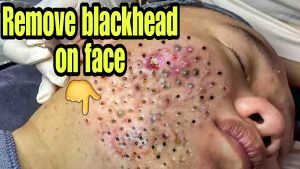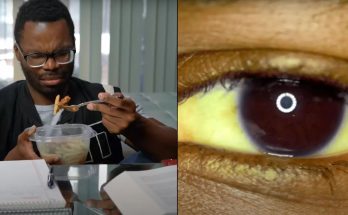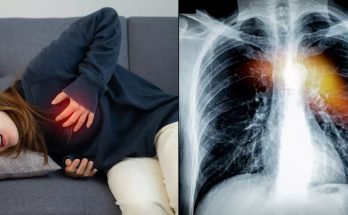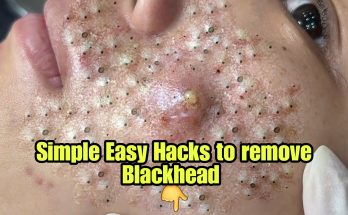
Black heads are pinhead-like lesions that affect the face and body. They represent oil plugs that contain dead skin cells, bacteria, and other materials.

Doctors also call blackheads open comedones. To treat these, a person needs to use products that break up the oil plug that formed inside the pore. Once they break up the oil plug, preventive methods can help keep blackheads at bay.
Receive a personalized plan with the right combination of prescriptions for your skin, created by Apostrophe expert dermatology team.
Blackhead removal for the face
Removing blackheads from the face requires a consistent skin care routine using products that can break up the skin-clogging oil inside.
1. Cleanse daily
Daily cleansing is vital to reduce excess oil, dirt, and other materials that can build up, clog pores, and potentially cause blackheads.
One approach that appears to helpTrusted Source is double-cleansing.
First, the person cleanses with an oil-based cleanser to remove makeup and pollutants from the skin.
They follow this with a gentle, water-based cleanser. This removes dirt and oils and prepares the skin for other treatment, such as applying a topical treatment.
2. Apply blackhead-clearing topicals
Topical applications can help break up the oil plug that leads to blackheads. These do take time to work, and a person may have to apply them daily for several weeks before the plug breaks up, reducing the blackhead’s appearance.
Topical applications include:
- Alpha hydroxy acids (AHAs): These are fruit acids that can encourageTrusted Source exfoliation. Examples include glycolic, mandolin, and lactic acids. These topical applications promote skin peeling and reduce blackheads.
- Salicylic acid: Salicylic acid comes from the willow tree. It is also a natural peeling agent that can help to peel away pore plugs.
- Tea tree oil: Tea tree oil has antibacterial and anti-inflammatory properties. In one small studyTrusted Source, 14 people with mild to moderate acne used a gel containing tea tree oil for 12 weeks. The results suggested that products containing tea tree oil can help manage symptoms without severe adverse effects.
Another option is benzoyl peroxide, a topical application that can reduce bacteria and promote peeling.
3. Try a natural blackhead removal mask
Exfoliating scrubs or masks can help remove dead skin cells that may otherwise clog pores and lead to more blackheads.
Oatmeal
According to one article from 2016, colloidal oatmeal has anti-inflammatory, exfoliating, and skin-soothing properties that may help people with eczema. The researchers suggested it could help reduce irritation and manage various skin conditions due to its beneficial effects on the skin barrier. It may help with acne, but there is no specific evidence to confirm this.
4. Facial scrubs
Some people use scrubs to exfoliate the skin in the hope that it will look smoother. For acne, the idea is that the scrub will open up closed comedones and stop them from progressing. However, their abrasive effect may lead to irritation.
Ingredients used in scrubs include:
- ground fruit pits
- aluminum oxide
- sodium tetraborate decahydrate granules
- polyethylene beads
People should check the ingredients of a scrub before purchasing. ExpertsTrusted Source note that sodium tetraborate decahydrate granules dissolve during washing, making them less abrasive and more suitable than other options for sensitive skin.
Polyethylene beads are a form of microplastic, and they are harmful to the environment.
Blackheads tend to develop on oily parts of the body, including the chest and back. The skin in these places is thicker and less sensitive to treatments, which means a person may need to change their treatment approach slightly.
5. Cleanse the skin daily
Keeping the skin clean and dry can help reduce excess oil in areas of the body where blackheads may develop. The American Academy of Dermatology (AAD) recommends using a body wash that contains benzoyl peroxide.
The AAD recommends purchasing a body wash that contains at least 5.3% benzoyl peroxide. Body washes with up to 10% benzoyl peroxide are available without a prescription. After application, a person leaves it on for at least 2 minutes before rinsing off.
If a person has difficulty reaching their back, they can purchase long-handled brushes or loofahs to help deliver the wash.
6. Use a brush to cleanse and exfoliate
Dry brushing the skin is a natural way to remove dead skin cells that can otherwise clog the pores. Use a natural-bristled brush with a long handle to reach the back, an exfoliating back band, or an extra-long loofah with handles. A person should use a gentler brush for the face than for the body.
Electronic brushes are also available for the skin, although they do not specifically aim to treat acne.
Research carried out by producers of these brushes showed they might be more effective at removing makeup and cleansing the skin than soap and water. A 2019 reviewTrusted Source suggested that they may be a safe and effective way of removing debris from the skin without reducing sebum excessively, but it did not specifically recommend their use for acne.
7. Use sun protection
People often think sun exposure can improve acne, but it can worsen symptoms. It can darken acne and make it last longer. Some acne treatments can also increase sensitivity to ultraviolet (UV) rays from the sun and tanning beds.
Using an oil-free sunscreen can help protect the skin from sunlight.
8. Practice blackhead-friendly habits
Here are some other actions that can help prevent acne, including blackheads:
- Changing clothes immediately after engaging in any sweat-producing activity, such as being outside or exercising. Sweat that sticks close to the skin can contribute to bacteria buildup.
- Wearing loose clothing made from natural fibers, such as cotton, that allow the skin to “breathe” and do not create irritating friction.
- Using a hand-held bag instead of a backpack if acne occurs on the back.
- Cleansing the skin as soon as possible after sweating.
9. Pore strips
Pore strips are a type of adhesive pad that a person places on their skin then pulls away. They aim to remove oil, dirt, and dead skin from the skin’s surface.
They contain a substance known as a cationic adhesive polymer. This binds to the contents of blocked pores and removes them as the person pulls the strip away.
To use a pore strip, a person will:
- Wet the skin.
- Apply the strip.
- Allow to harden.
- Peel off.
ExpertsTrusted Source recommend using them once a week and advise people not to use them more than once every 3 days.
10. Over-the-counter topical remedies
Look for topical treatments, such as creams or gels, that contain one or more of the following:
- benzoyl peroxide, which destroys bacteria and reduces inflammation
- topical retinoids, such as tretinoin and adapalene, which remove dead skin cells and prevent clogging of the pores
- azelaic acid, which helps remove dead skin and kill bacteria
- sulfur, a natural element with antibacterial properties
A person should speak with their doctor or pharmacist about suitable options, which strength to use, and possible adverse effects.
Potential side effects of topical treatments include:
- skin irritation
- hypersensitivity to sunlight
- dry skin
Always follow the instructions on the pack and any advice from the doctor or pharmacist.
A doctor may prescribe topical antibiotics, which help kill bacteria on the skin. Antibiotic creams are only for short-term use, usually 6–8 weeks, to prevent the development of antibiotic resistance.
If these options do not help, they may prescribe a stronger medication. Examples include oral antibiotics, isotretinoin capsules, or co-cyprindiol, which is a hormonal treatment.
Some substances are more likely to block skin pores than others. They have comedogenic properties. Examples include the foaming agent sodium lauryl sulfate, coconut oil, wheat germ, and some algae extracts.
Noncomedogenic products are products that do not contain such substances and are less likely to block the pores. In this way, they may help reduce the risk of acne.
Substances that are relatively less comedogenic and less likely to block the pores include:
- almond, avocado, olive, and jojoba oils
- glycerin
- aloe vera
- talc
However, this does not mean they can treat acne.
Here are some strategies to avoid:
- Blackhead extractors: These metal or plastic tools have an opening on the end that creates pressure on the pore to remove blackheads. However, they can damage the skin or introduce more bacteria and people should leave them to the professionals.
- Popping or pressing: Pressing on a blackhead can increase the risk of pain, scarring, more acne, and infection. It also creates an entrance for more oil and bacteria to fill up the pore. Only a dermatologist should remove acne.
- School glue: Some “online hack” videos and articles recommend using school glue, such as Elmer’s glue, to remove blackheads. However, the glue can clog the pores and may cause allergic reactions.
- Toothpaste: This has some antibacterial properties, but it also contains substances that can damage or irritate the skin.
Always consider the potential for damage and irritation before using any force or shortcut products on the skin. They can lead to scarring and may make acne worse.
Various at-home measures can help manage blackheads. If they do not help after 8 weeks, the AAD recommends seeing a dermatologist.
A doctor can prescribe stronger treatments that may help reduce the appearance of blackheads on the face and body.
- Virtual consultation from home
- Personalized prescription plan
- Direct delivery to your door
- Ongoing support for your skin journey

Hims Skincare
- Customized treatment for your skin health goals
- FDA-approved options available
- Consultation with experienced professionals
- Direct shipping and convenient refills

Hers Skincare
- Dermatologist-trusted, customized care
- Great for acne, wrinkles, and more
- Get personalized prescription gel creams
- Enjoy 100% online support and direct delivery
Last medically reviewed on March 8, 2022








